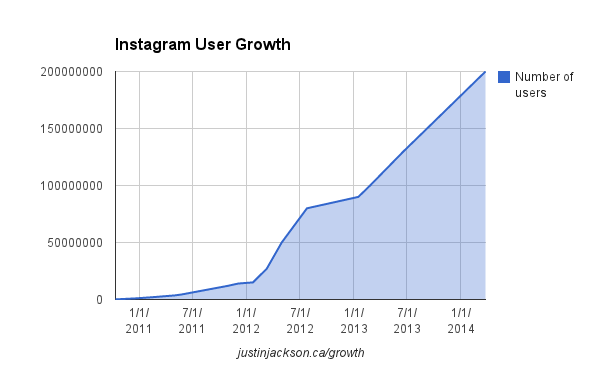Old songs about the main thing, or How to attract more buyers

You created a product. It meets the needs of the consumer. But how are you going to launch it to the market?
Once Rob Walling, the creator of the Drip service, told me: “it’s not enough just to produce what people need.” It's true. After launching the product, you need a steady stream of people interested in purchasing it.
')
I receive hundreds of messages from creators who developed the product but could not find buyers. Why is it so hard?
The noise of large markets
The biggest problem in most markets is that they are terribly noisy.
They already have reputable players who have flooded existing channels with advertisements, articles, keywords and posts in social networks. Your “novelty” is a drop in a turbulent river: you will not even notice how it will carry you downstream, and no one will even pay attention to it.
Shouting all this noise and being noticed is not easy at all.
Your audience is not enough
Perhaps you have already gathered an audience. Maybe you have a beta list, followers on Twitter and people following your blog. Great! This is an important first step.
However, if you want to take a truly advantageous position on the market, sending tweets to several hundred people is not enough.
“Having an audience is a good start. Well, then what? At a certain stage, you will have to learn other marketing skills, otherwise your business will stop developing. ” - Rob Walling, Drip.
Focusing your business on your small audience is the same as hooking it to a children's train.

If you develop a high-quality product, you need the fastest locomotive you can bring you to your market.
Find a locomotive that is bigger and faster than you.
This is what Baremetrics founder Josh Pigford did when he used the Buffer project as a high-speed train.

Josh developed a product that provided an automatic information panel for SaaS application revenue. Buffer gathered a huge audience thanks to good content marketing (they scored more than a million users and 240 thousand followers on Twitter).
A big part of the marketing strategy of Buffer is its transparency. They share information about everything: stocks, wages, prices, fundraising, company valuation.
Josh offered the company something new: the ability to make public its income indicators through the portal buffer.baremetrics.io . The latter superbly propiaril both companies and contributed to their growth.
In just seven days of working with Buffer, Josh increased the number of buying customers by 27%.
“Fall on the tail” of another audience
For someone who is just learning to walk, it will be incredibly useful to enlist the support of their elders before they go on a big hike. On the shoulders of your parents you will manage to overcome far greater distance than you would have walked on your own.
The same statement is true for applications.
Here is an example: Hipstamatic vs Instagram. Both suggested a similar function for users: take a photo and install a filter. The difference is that Instagram went on Twitter profiles. Users could register and immediately contact the same people that they followed on Twitter, and then upload photos that they made on Instagram. At that time, Twitter had not yet provided photo sharing, so Instagram actually became a service that implements these functions.
PSFK blog posts , Parneet Gosal described it this way:
“On launch day, Twitter creator, Jack Dorsey (Jack Dorsey), reported on this event to his huge army of followers who have already gathered more than a million. [But] not enough to have influential friends who know about your new service. For example, Instagram co-founder Kevin Systrom told the TechCrunch Disrupt NYC event that the open social network Instagram and integration with other social sites went a long way until the service became popular. [Users could] share their photos from Instagram to Facebook, Twitter and Flickr. ”

Pay attention to the "hockey stick" on the chart
Roughly speaking, Instagram managed to assign Twitter users. This is a powerful argument that Twitter has shut down API access for Instagram:
"We understand the value of displaying a chain of subscribers for Twitter users, but at the same time we confirm that this feature is no longer available on Instagram." - statement by Twitter representative, Carolyn Penner (Carolyn Penner), July 2012.
This is the use of what has already been created to quickly and effectively achieve your own goals: you integrate into a platform where users have already built social connections, and import these connections into your application.
Use the user base of other companies.
Catch big waves

Let's go back to the first example.
Another factor that played into the hands of Baremetrics was that they caught a big wave - in this case, the growing popularity of the Stripe platform became such a beneficial “phenomenon”.
A big wave is a big trend or platform that rolls like a huge shaft. Stripe has grown in the developer community and turned into a real tsunami: it has become the tool of first choice for embedded payments in popular web applications.
Focusing on Stripe allowed Josh to find his way to the thousands of developers who liked this ecosystem. Yes, PayPal has more users, but Stripe is gaining momentum. You have to find that perfect moment to catch a big wave. If you skip the "window", the wave will be much smaller. Many people tried to launch Baremetrics analogues after Josh, but new projects did not receive such support.
How to recognize big waves? Be alert. What are people talking about on Twitter? What are they looking for in Google? What are they telling their friends about?
Many of us are familiar with Slack, a group chat application that has gained momentum lately. Look at search queries in Google Trends for Slack and other business-oriented group chat apps: Hipchat and Yammer:

Another good tool for analyzing trends is Topsy. Here is an example .
The main thing is to catch the wave while you have such an opportunity. In the end, the surge will subside, and the channel will lose its value. My friend Kyle Fox (Kyle Fox) described it this way:
It really is like a wave: you soar on its crest and you know that, having done a certain way, it will die out. Then you start looking for a new wave.
Bottom line: three opportunities to promote young businesses that are worth trying.
- Find a high-speed locomotive - influential market players . Turn to finding individuals (or brands) that have already gathered an audience. Attach your wagons to their locomotive: offer a partnership that benefits both parties.
- Leave on the shoulders of existing communities: find platforms (especially those in which there are any social profiles) with which you can integrate. Such associations should allow users to import their existing contacts from an address book, or from a list of friends.
- Catch big waves: constantly study your market. Watch for the emergence of new trends that may be your driving force. Pay attention to what people are talking about at industry events, forums and in social media. Be alert and react to trends in a timely manner! If you hesitate, you can miss the wave.
About the author: Justin Jackson (Justin Jackson), blogger, writer, father of four children. Author of the book " Marketing for Developers ", a leading podcasts.
Source: https://habr.com/ru/post/293048/
All Articles